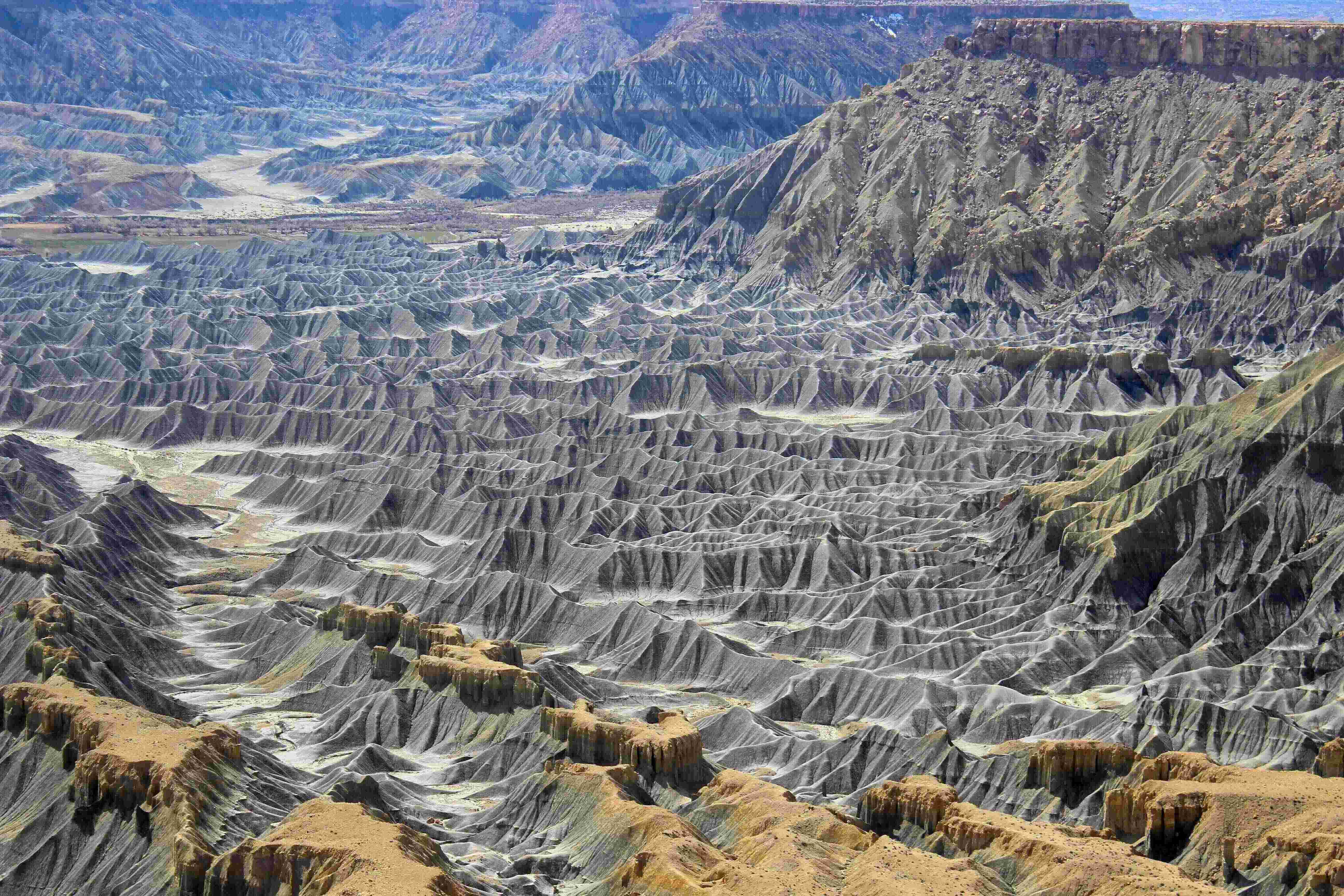
Geomorphology is a fascinating field that explores the Earth’s ever-changing physical features. From towering mountains to meandering rivers and sprawling deserts, the study of geomorphology delves into the processes that shape our planet’s surface. In this article, we will uncover 20 extraordinary facts about geomorphology that will leave you amazed at the wonders of our natural world. Prepare to be astounded as we delve into the forces that shaped our landscapes, the incredible landforms that exist today, and the impact that human activities have had on Earth’s geomorphological processes. Whether you are a geography enthusiast or simply curious about the intricacies of our planet, these facts will provide you with a deeper appreciation for the beauty and complexity of geomorphology. So, let’s embark on this journey through the remarkable world of Earth’s ever-changing landforms.
Key Takeaways:
- Geomorphology is like a detective investigating how the Earth’s landscapes were formed and changed over time. It helps us understand climate change, natural hazards, and even the history of other planets!
- Geomorphologists use cool tools like satellites and lasers to study mountains, rivers, and even caves. They help protect the environment, plan safe cities, and uncover secrets hidden in the Earth’s layers.
The study of geomorphology explores the formation and evolution of landforms.
Geomorphology is the scientific study of the Earth’s landforms and the processes that shape them. It investigates the forces of nature, such as erosion, weathering, and plate tectonics, that give rise to the diverse features we see on our planet today.
The Grand Canyon is a remarkable example of geomorphological processes.
The formation of the Grand Canyon is a testament to the power of geomorphological forces. Over millions of years, the Colorado River etched its way through the layers of sedimentary rock, creating one of the most breathtaking natural wonders on Earth.
Geomorphology plays a crucial role in understanding climate change.
By studying landforms and their changes over time, geomorphologists can gather valuable insights into past climate patterns. This helps in predicting future climate scenarios and formulating effective strategies for climate change mitigation and adaptation.
Mount Everest, the highest peak on Earth, is a product of geomorphic processes.
The towering height of Mount Everest, standing at 8,848 meters (29,029 feet), is a result of the collision between the Indian and Eurasian tectonic plates. Geomorphological processes, including uplift and erosion, have shaped this majestic mountain over millions of years.
Geomorphologists use advanced technologies to study and analyze landforms.
Lidar (Light Detection and Ranging), satellite imagery, and geographic information systems (GIS) are some of the modern tools utilized by geomorphologists to obtain accurate data about landforms and their characteristics.
Geomorphology helps in natural hazard assessment and management.
Understanding the geomorphic processes behind events such as landslides, earthquakes, and floods is crucial for assessing and managing natural hazards. Geomorphologists provide valuable insights to plan infrastructure and settlements in safer areas.
The formation of river deltas is a fascinating geomorphic phenomenon.
River deltas, like the world-famous Nile Delta and Mississippi Delta, are formed when rivers deposit sediment at their mouths. Geomorphologists study these intricate landforms to understand the interaction between rivers, ocean currents, and sediment transport.
Geomorphology helps in groundwater management and understanding aquifer systems.
By studying landforms and their relationship with underground water sources, geomorphologists play a vital role in sustainable groundwater management. Their research aids in locating and protecting important aquifers for human use and ecological balance.
Geomorphology contributes to the field of ecology and biodiversity conservation.
The study of landforms and their influence on ecosystems allows geomorphologists to assess the ecological significance of different landscapes. This knowledge helps in developing conservation strategies and protecting biodiversity-rich areas.
Geomorphology encompasses various sub-disciplines, including fluvial, coastal, and glacial geomorphology.
Fluvial geomorphology focuses on rivers and their dynamics, coastal geomorphology explores coastal landforms and processes, and glacial geomorphology investigates the formation and effects of glaciers on the landscape.
The study of geomorphology can reveal geological history and past climate changes.
Through the analysis of landforms, sediment layers, and fossils, geomorphologists can decipher the Earth’s geological history, including periods of glaciation, volcanic activity, and shifts in climate patterns.
Geomorphological research aids in understanding the impact of human activities on the landscape.
Geomorphologists study the effects of human interventions, such as deforestation, urbanization, and mining, on landforms and ecosystems. This knowledge helps in developing sustainable practices to minimize negative impacts.
Geomorphology plays a role in engineering and infrastructure development.
By understanding the geological and geomorphological characteristics of an area, engineers can design structures that are resilient to natural hazards and ensure the long-term stability of infrastructure projects.
The study of geomorphology extends beyond Earth.
Geomorphologists also explore landforms and processes on other celestial bodies, such as Mars and the Moon, providing insights into the geologic history of these planets.
Geomorphology helps in understanding the dynamics of sediment transport in rivers and oceans.
By studying erosion, deposition, and sediment transport in aquatic systems, geomorphologists contribute to improving our knowledge of water resource management and the protection of aquatic habitats.
Geomorphology investigates the formation and evolution of caves and karst landscapes.
Through the study of caves and karst systems, geomorphologists can unravel the intricate processes that shape these unique underground landscapes, including the dissolution of limestone and the formation of stalactites and stalagmites.
Geomorphology has applications in archaeology and cultural heritage preservation.
By examining the landforms and geological materials surrounding archaeological sites, geomorphologists help archaeologists uncover hidden history, understand past human-environment interactions, and preserve cultural heritage.
Geomorphology is crucial for understanding land degradation and desertification.
Geomorphologists study the processes leading to land degradation and desertification, such as soil erosion and wind action, to develop strategies for combating these challenges and promoting sustainable land management.
Geomorphology contributes to land-use planning and natural resource management.
By analyzing landforms, geomorphologists assist in determining suitable land use practices, protecting sensitive areas, and ensuring the sustainable utilization of natural resources.
Geomorphology continues to evolve with advancements in technology and research.
New technologies, such as remote sensing and computer modeling, have revolutionized the field of geomorphology, allowing scientists to explore landforms and processes in unprecedented detail and accuracy.
Conclusion
Geomorphology is a fascinating field that unveils the secrets of our Earth’s ever-changing landscapes. From the processes that shape mountains to the formation of river valleys and the erosion of coastlines, it is evident that our planet is a dynamic and complex system. The 20 extraordinary facts about geomorphology mentioned in this article only scratch the surface of the vast knowledge and discoveries in this field.
By delving into the world of geomorphology, we gain a deeper understanding of how geological forces, climate, and human activities shape our environment. From understanding floodplains and landslides to deciphering the evidence of ancient glaciers, geomorphologists play a crucial role in unraveling the Earth’s geological history and predicting future changes. It is through their research and expertise that we can better comprehend the forces at work and take proactive steps in managing and conserving our precious landscapes.
FAQs
1. What is geomorphology?
Geomorphology is the scientific study of the Earth’s landforms, the processes that shape them, and the forces that drive these processes.
2. How is geomorphology important?
Geomorphology helps us understand how landscapes are formed and how they change over time. It has implications for land management, urban planning, and environmental conservation.
3. What are some examples of landforms studied in geomorphology?
Examples of landforms studied in geomorphology include mountains, valleys, plateaus, plains, canyons, and coastlines.
4. How do geological forces shape landforms?
Geological forces such as tectonic activity, erosion, weathering, and deposition play a significant role in shaping landforms over millions of years.
5. What are some methods used in geomorphology?
Geomorphologists use various methods, including field observations, remote sensing, GIS (Geographic Information System), and laboratory analysis of rock and soil samples.
6. How does human activity affect geomorphological processes?
Human activities such as deforestation, mining, and urbanization can accelerate erosion, alter natural drainage patterns, and impact geomorphological processes.
7. Can geomorphology help predict natural hazards?
Yes, through studying past events and understanding the underlying processes, geomorphologists can contribute to predicting natural hazards such as landslides, floods, and earthquakes.
8. How does climate change influence geomorphology?
Climate change can affect geomorphological processes by altering rainfall patterns, increasing glacier melt, and influencing sea-level rise, leading to changes in river systems, coastal erosion, and other landscape modifications.
9. What are the career opportunities in geomorphology?
Career opportunities in geomorphology include working as a researcher in academia, government agencies, or consulting firms, as well as environmental planning, natural resource management, and geotechnical engineering.
10. How can I learn more about geomorphology?
You can learn more about geomorphology by studying geology, geography, or earth science in educational institutions, attending conferences, conducting fieldwork, and exploring scientific literature in the field.
Was this page helpful?
Our commitment to delivering trustworthy and engaging content is at the heart of what we do. Each fact on our site is contributed by real users like you, bringing a wealth of diverse insights and information. To ensure the highest standards of accuracy and reliability, our dedicated editors meticulously review each submission. This process guarantees that the facts we share are not only fascinating but also credible. Trust in our commitment to quality and authenticity as you explore and learn with us.


